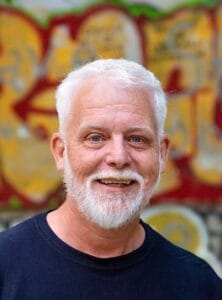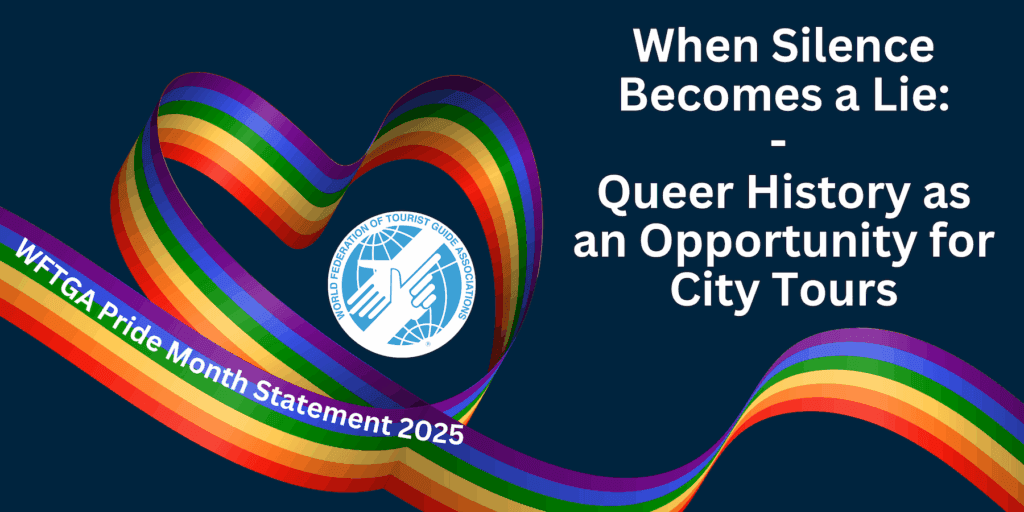Tour guides are more than navigators – they decide which stories survive. It’s high time that queer history finds its natural place in guided tours.
Matthew López poses a fundamental question in his play “The Inheritance”: “If we can no longer be in conversation with our past, what will our future be?” These words strike at the heart of what guides and cultural mediators do daily – and what they can do better.
The Problem: Systematic Erasure of Queer History
Queer history is everywhere – it has simply been systematically made invisible. For centuries, people we would today call queer were forced to hide their relationships and ways of life. Out of fear of persecution, they often destroyed the traces of their existence themselves: letters, photographs, personal belongings.
Even state archives deliberately ignored queer history. Criminal files for “unnatural fornication” bear notes: “Without historical value. Not for the state archive” – although these cases made up a considerable portion of all court proceedings.
“Stonewall was about the fundamental right to live authentically,” says Ann Marie Gothard, co-founder of the Stonewall National Monument Visitor Center. As tour guides, we have the responsibility to reconstruct these erased stories.
Hidden Prominence: Queer Rulers and Artists
History is full of queer personalities in positions of power – yet these aspects are systematically concealed. King James I of England had male lovers, Ludwig II of Bavaria was in love with Richard Wagner, Prince Eugene of Savoy lived unmarried. Renaissance artists like Leonardo da Vinci, Michelangelo, and Botticelli had queer relationships.
An art history student notes: “I have a bachelor’s degree in art history, but none of this was ever mentioned to me.” Tour guides can close this gap by telling complete life stories.
Europe as a Pioneer
Europe is home to some of the most LGBTIQ+-friendly cities worldwide. Amsterdam, Berlin, Vienna, and Madrid host world-famous Pride celebrations. Reykjavik, Valletta, Groningen, and Luxembourg are considered particularly open – over 90 percent of citizens see them as good places for queer people.
Malta established itself as a European champion of LGBTIQ+ rights and has been at the top of the ILGA-Europe ranking for ten years. Despite political setbacks in some countries, data shows positive developments in public opinion.
Research Partners: Not Working Alone
Tour guides don’t have to research alone. Specialized institutions have done decades of groundwork:
QWIEN – Center for Queer Culture and History in Vienna functions as an archive and research institution with over 5,000 volumes and one of the most comprehensive collection of LGBTIQ+ magazines in the German-speaking world. The organization has been offering city walks for years that make queer life worlds between the 18th century and today visible.
The Magnus Hirschfeld Society Berlin researches the legacy of sexologist Magnus Hirschfeld, who founded the world’s first committee for homosexual rights in 1897 and established Berlin as a center of early queer emancipation.
Practical Implementation
Integrating queer history requires sensitivity and expertise. Concrete steps for tour guides:
- Research: Identify queer places and people in your city
- Networks: Contact local LGBTIQ+ organizations and archives
- Creative Reconstruction: Learn to convey queer history despite missing evidence
- Sensitive Language: Understand historical terminology and its evolution
Economic Factor
The LGBTIQ+ tourism industry accounts for an estimated 5-10% of the global market – about 50 billion euros annually in Europe. Tolerance and safety strongly influence travel decisions. Tour guides who address queer history automatically signal safety and openness.
Four Core Functions of Queer Historical Communication
- Creating Visibility: Show that queer people existed and exist
- Promoting Education: Educate people toward greater tolerance
- Strengthening Advocacy: Foster political debates for equality
- Preserving Memory: Serve as representatives for otherwise invisible life realities
The Future is Diverse
The queer community is growing, especially in Generation Z. Europe is identified as one of the fastest-growing regions in LGBTIQ+ tourism. Even Poland, despite its conservative past, is experiencing an upturn in queer visitors.
Conclusion: Cultural Necessity and Professional Opportunity
Making queer history visible is neither luxury nor political gesture – it is cultural necessity and professional opportunity. As tour guides, we have the unique opportunity to become pioneers of a more inclusive tourism industry.
Investment in queer cultural heritage pays off multiple times: through expanded target groups, differentiated offerings, and greater cultural authenticity. In a time when travelers seek meaningful experiences, queer history offers the opportunity to stand out and create real added value.
It’s time to bring the hidden stories into the light – our guests, our culture, and our conscience will thank us for it.
 About the Author:
About the Author:
Gerd Brandstätter is Austria Guide in Austria and Italy and staff member at QWIEN – Center for Queer History in Vienna. As a tour guide, he actively advocates for the integration of queer history into tourism offerings, combining scientific research with practical educational work.
Contact: www.vienna-now.at

